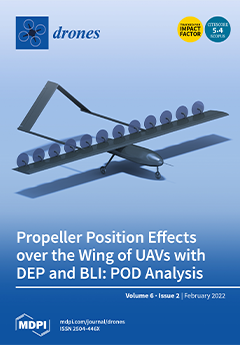Lidar point clouds have been frequently used in forest inventories. The higher point density has provided better representation of trees in forest plantations. So we developed a new approach to fill this gap in the integrated crop-livestock-forest system, the sampling forest inventory, which
[...] Read more.
Lidar point clouds have been frequently used in forest inventories. The higher point density has provided better representation of trees in forest plantations. So we developed a new approach to fill this gap in the integrated crop-livestock-forest system, the sampling forest inventory, which uses the principles of individual tree detection applied under different plot arrangements. We use a UAV-lidar system (GatorEye) to scan an integrated crop-livestock-forest system with Eucalyptus benthamii seed forest plantations. On the high density UAV-lidar point cloud (>1400 pts. m
2), we perform a comparison of two forest inventory approaches: Sampling Forest Inventory (SFI) with circular (1380 m
2 and 2300 m
2) and linear (15 trees and 25 trees) plots and Individual Tree Detection (ITD). The parametric population values came from the approach with measurements taken in the field, called forest inventory (FI). Basal area and volume estimates were performed considering the field heights and the heights measured in the LiDAR point clouds. We performed a comparison of the variables number of trees, basal area, and volume per hectare. The variables by scenarios were submitted to analysis of variance to verify if the averages are considered different or equivalent. The RMSE (%) were calculated to explain the deviation between the measured volume (filed) and estimated volume (LiDAR) values of these variables. Additionally, we calculated rRMSE, Standard error, AIC, R
2, Bias, and residual charts. The basal area values ranged from 7.40 m
2 ha
−1 (C1380) to 8.14 m
2 ha
−1 281 (C2300), about −5.9% less than the real value (8.65 m
2 ha
−1). The C2300 scenario was the only one whose confidence interval (CI) limits included the basal area real. For the total stand volume, the ITD scenario was the one that presented the closer values (689.29 m
3) to the real total value (683.88 m
3) with the real value positioned in the CI. Our findings indicate that for the stand conditions under study, the SFI approach (C2300) that considers an area of 2300 m
2 is adequate to generate estimates at the same level as the ITD approach. Thus, our study should be able to assist in the selection of an optimal plot size to generate estimates with minimized errors and gain in processing time.
Full article





